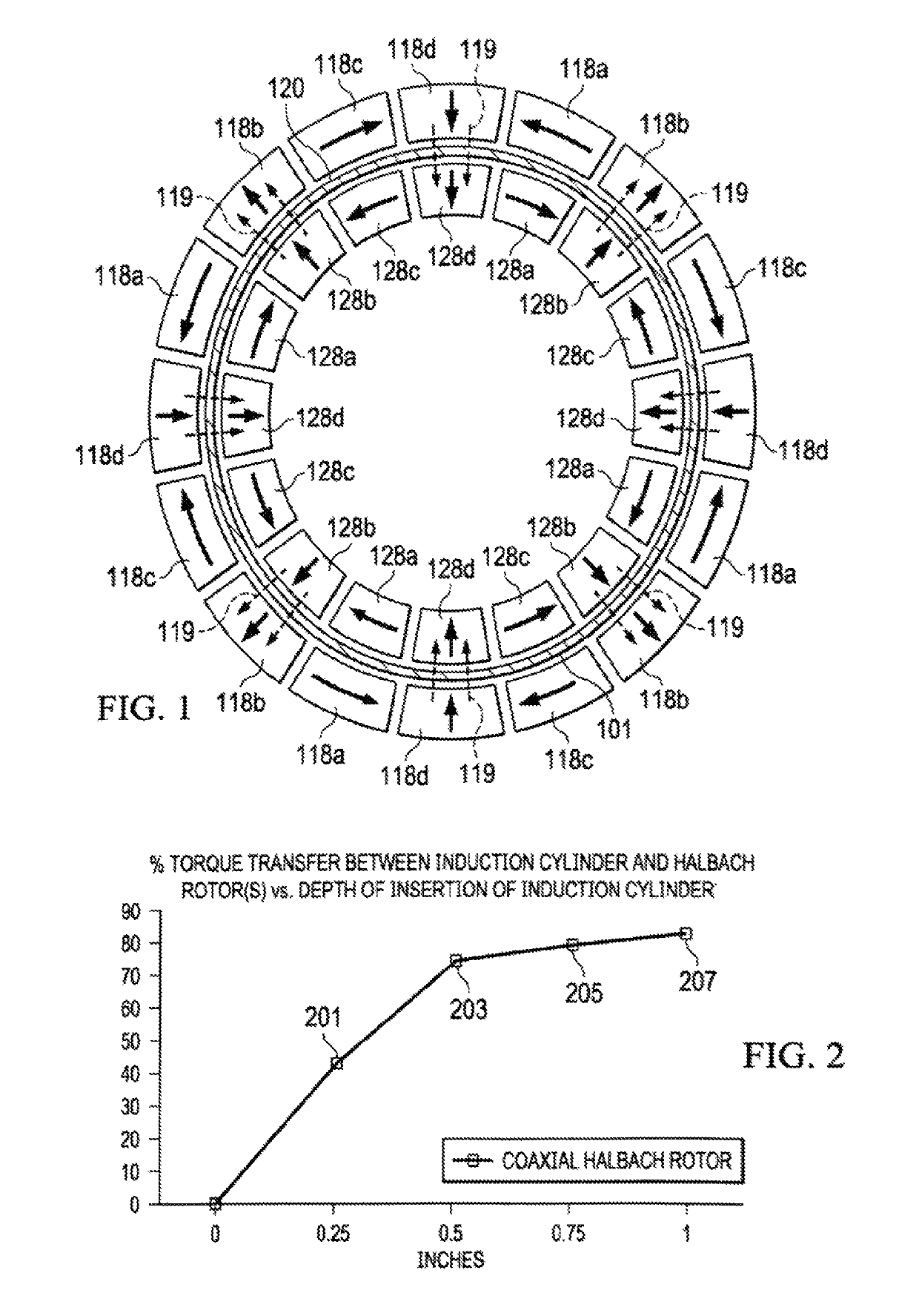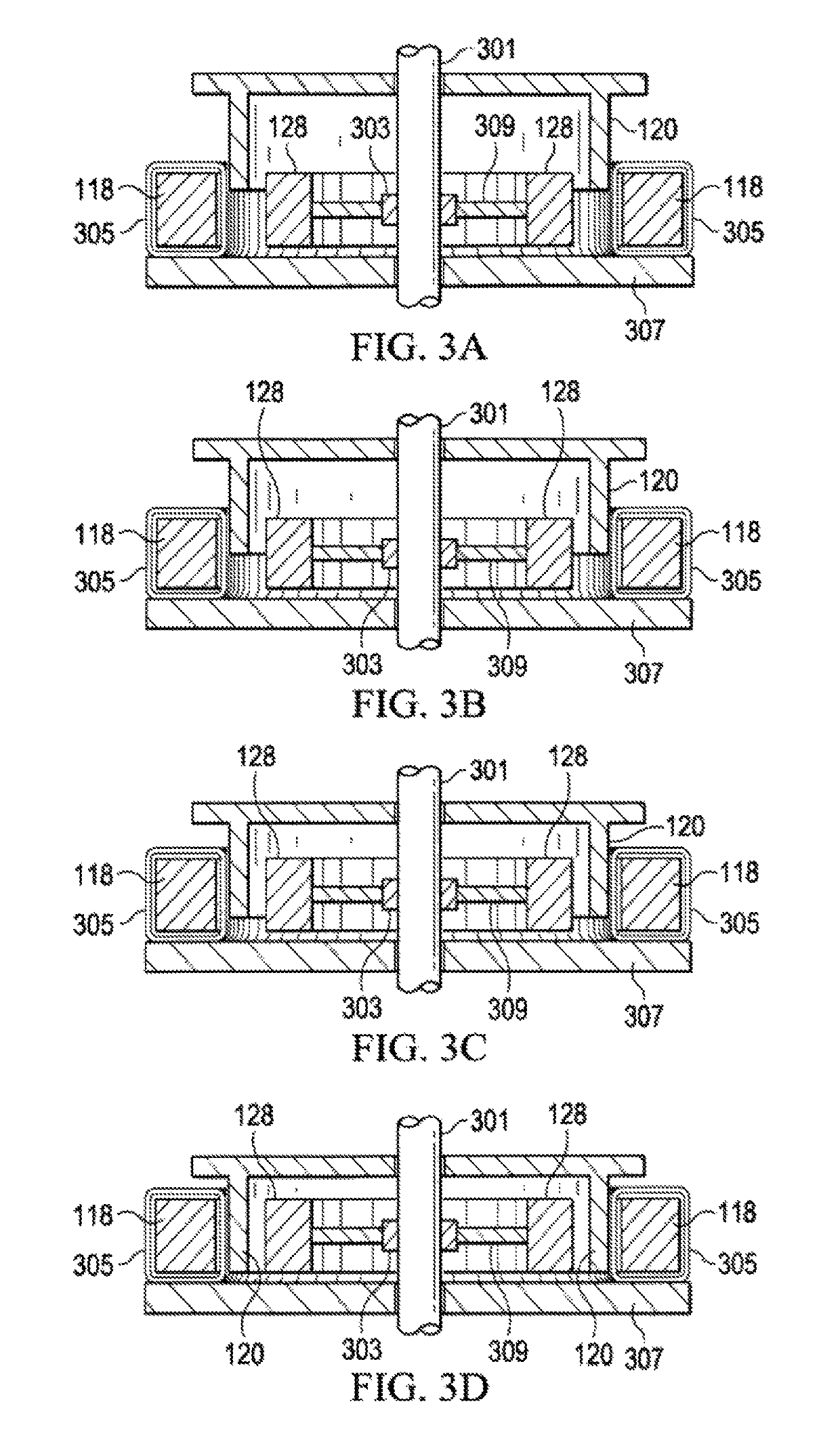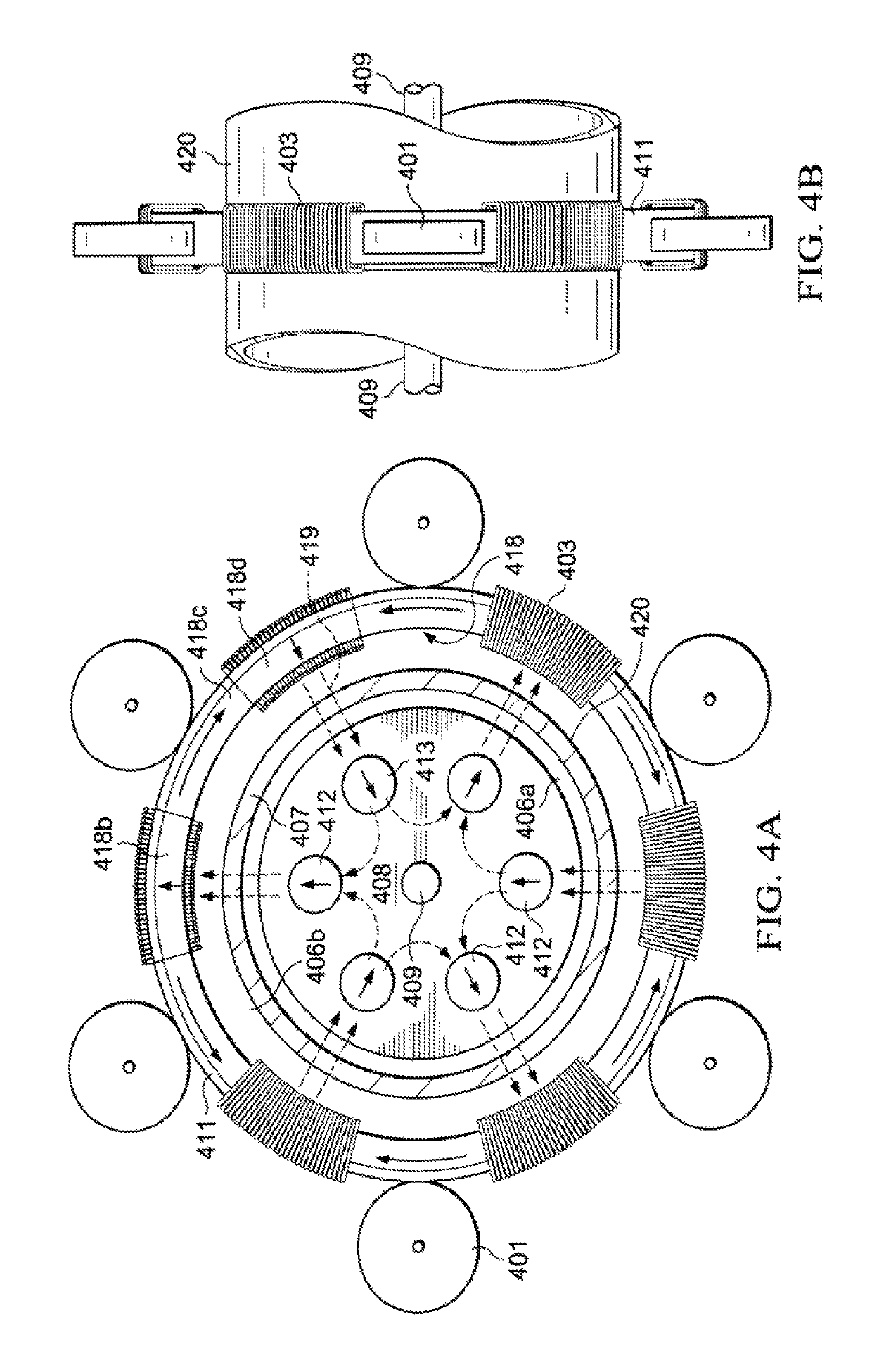Flywheel energy storage device with induction torque transfer
a technology of induction torque and energy storage device, which is applied in the direction of mechanical energy handling, mechanical equipment, machines/engines, etc., can solve the problems of insufficient power supply of electromagnets, etc., and achieves less electrical power generation, more power generation, and greater electrical power generation
- Summary
- Abstract
- Description
- Claims
- Application Information
AI Technical Summary
Benefits of technology
Problems solved by technology
Method used
Image
Examples
Embodiment Construction
[0060]Refer now to the drawings wherein depicted elements are, for the sake of clarity, not necessarily shown to scale and wherein like or similar elements are designated by the same reference numeral through the several views. In the interest of conciseness, well-known elements may be illustrated in schematic or block diagram form in order not to obscure the present invention in unnecessary detail, and details concerning various other components known to the art, such as magnets, electromagnets, controllers, and the like necessary for the operation of many electrical devices, have not been shown or discussed in detail inasmuch as such details are not considered necessary to obtain a complete understanding of the present invention, and are considered to be within the skills of persons of ordinary skill in the relevant art.
[0061]In addition, as used herein, the term “substantially” is to be construed as a term of approximation. The term “N / S polarity” used with respect to a drawing, ...
PUM
 Login to View More
Login to View More Abstract
Description
Claims
Application Information
 Login to View More
Login to View More - R&D
- Intellectual Property
- Life Sciences
- Materials
- Tech Scout
- Unparalleled Data Quality
- Higher Quality Content
- 60% Fewer Hallucinations
Browse by: Latest US Patents, China's latest patents, Technical Efficacy Thesaurus, Application Domain, Technology Topic, Popular Technical Reports.
© 2025 PatSnap. All rights reserved.Legal|Privacy policy|Modern Slavery Act Transparency Statement|Sitemap|About US| Contact US: help@patsnap.com



